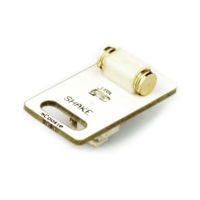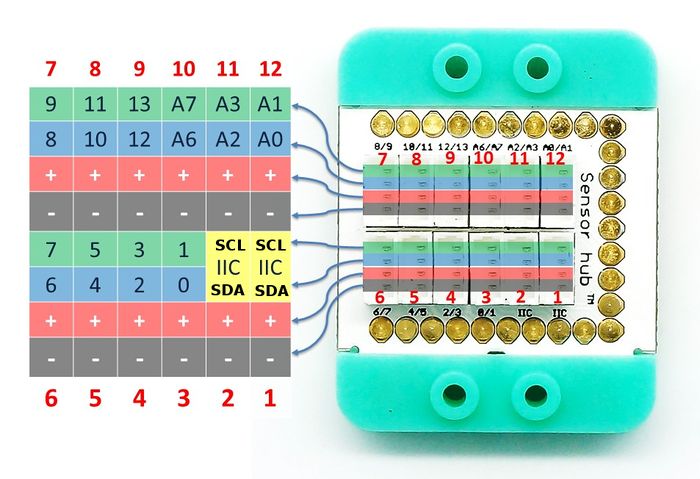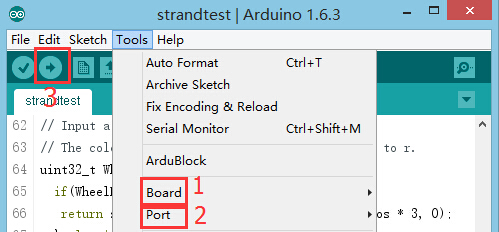|
Microduino-Shake is a vibration detection sensor.
Features
- Small size
- Adjustable detection sensibility
Specification
- Electrical specification
- Digital signal input;
- 3.3V~5V operation voltage;
- Tech parameters
- Measurement range: 300 grams to thousands of kilograms
- Accuracy: 1/1000~1/10000
- Size
- Size of the sensor: 10mm*7mm,
- Size of the board: 20mm*10mm
- 1.27mm-pitch 4Pin interface connects with Sensorhub.
- Connection method
- Pin description: GND, VCC, signal output and NC(empty).
Note: The output signal is digital and it needs digital port to detect (D0~D13), which can connect to the pin (3-9) of Sensorhub with the corresponding pins (D4, D6, D8, D10 and D12).
Document
Development
Preparation
Program
- Open Arduino IDE, select File→Examples→Basics→DigitalReadSerial program examples, choose the right board, compile and then download.
- int pushButton = 6; Define the input pin as D6. (Users can also custom the name.)
- pinMode(pushButton, INPUT); Define pushButton as the input pin.
- int buttonState = digitalRead(pushButton); Read values of the pushButton input pin.
- Open the serial monitor after download. You can tell if there is vibration or not by the detection value, which is "0" when there is no vibration or "1" under vibration. You can also adjust R3 resistance on the back of the sensor to change detection sensibility.
Hardware Buildup
- Connect Microduino-Shake with Sensorhub to the digital port D6, which refers to "Define pushButton" mentioned above and users can also change according to personal needs.
- For reference: Microduino-Sensorhub
- Connect the core, Sensorhub and Shake to a computer with a USB cable.
- Select the right board and COM port, compile and download. You can refer to AVR Core:Getting started
- Open the serial monitor after download and you'll see vibration values.
Application
- It can be used as a vibration sensor.
Project
Lazy Donkey
Development
It can be applied in vibration detection.
Purchase
History
Pictures
|


